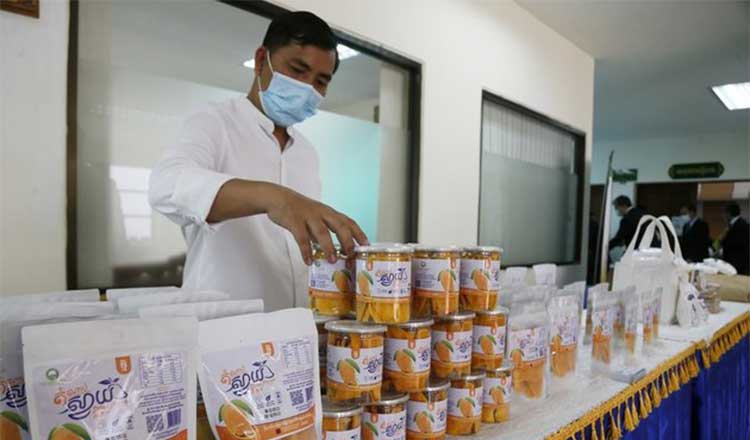The Incubation Network, in partnership with the Global Plastic Action Partnership, UpLink by the World Economic Forum, and the Alliance to End Plastic Waste, have recently launched the Plastic Waste to Value Southeast Asia Challenge to tackle plastic waste mismanagement in the region.
Established to accelerate innovative solutions that are focused on plastic recycling and upcycling in Indonesia, the Philippines, Thailand, and Vietnam, the challenge is excited to unveil five innovators that will be participating in the tailored development program over the course of five months.
The challenge received a total of 101 incredible applications through the UpLink platform. 48 shortlisted candidates were carefully assessed by academic researchers, corporate sustainability practitioners, innovators, and climate & circular economy specialists. The selected innovators will receive partnership building opportunities, mentorship, increased visibility, access to networks, and grants to scale their solutions.
“Working in partnership with the Global Plastic Action Partnership and the Alliance to End Plastic Waste, The Incubation Network is committed to support solutions that will enhance waste management ecosystems and accelerate the move towards a circular future for plastics,” says Simon Baldwin, Global Head of Circularity, SecondMuse. “We are very excited. The selected innovators have demonstrated a compelling opportunity for growth and economic & environmental impact!”
Urgent sustainable solutions are needed to combat the ever-growing global plastic waste pollution crisis. Between 2017-2019, an estimated 2 million tonnes of plastic waste leakage per year came from Indonesia, the Philippines, Thailand, and Vietnam. This accounts for 17 per cent of annual global marine plastic waste leakage. Plastic waste that is not polluting waterways is either burnt or dumped - posing a significant threat to environmental and biodiversity health.
“Innovative solutions are critical to address plastic waste management in the region. We are thrilled to have worked closely with The Incubation Network and the Alliance to End Plastic Waste to identify an impressive cohort of Top Innovators with high-impact solutions that bring value to plastic waste. We look forward to providing the Innovators with greater visibility and impact in the region.” says Poonam Watine, Knowledge Specialist, Global Plastic Action Partnership.
Solutions have been assessed based on their contributions to at least one of the three focus areas: (1) Increasing the amount of plastic waste managed, processed and/or recycled; (2) supporting the operational improvement of plastic waste management and recycling; and (3) improving working conditions of enterprises in plastic waste management and recycling.
The Plastic Waste to Value Southeast Asia Challenge cohort includes:
Bank Sampah Bersinar (Indonesia)
Bank Sampah Bersinar is a social enterprise that provides community-based waste management solutions.
ENVIROTECH WASTE RECYCLING INC. (Philippines)
Envirotech collects Single-use plastic (SUPs) and turns them into useful products such as school chairs.
Kibumi (Indonesia)
Kibumi is a disruptive startup company that strengthens the plastic recycling supply chain through digitalised and modernised waste collection points.
Plastic People (Vietnam)
Plastic People transforms plastic waste into useful and upcycled products such as furniture or accessories.
TerraCycle Global Foundation (Thailand)
TerraCycle Global Foundation provides simple, innovative, and high impact solutions to prevent, remove, and recycle waste from the environment.
“Ending plastic waste is a clear and urgent necessity recognising both the environmental costs and economic losses when plastic waste is not recovered,” says Nicholas Kolesch, Vice President Projects at the Alliance to End Plastic Waste. “With growing demand for post-consumer plastic, the Plastic Waste to Value Southeast Asia Challenge will support ventures in the region to close this gap, getting plastics out of the environment and back into a circular economy.”
The Plastic Waste to Value Southeast Asia Challenge is led by The Incubation Network, the Global Plastic Action Partnership, UpLink by the World Economic Forum, and funded by the Alliance to End Plastic Waste, and supported by SecondMuse, The Circulate Initiative, Global Affairs Canada, and DEFRA.
About The Incubation Network
The Incubation Network is an impact-driven initiative that sources, supports and scales holistic innovative solutions to combat plastic pollution and improve the livelihoods of vulnerable groups in waste management and recycling systems.
Part of a highly collaborative community of startups and entrepreneurs, investors, partners and programs, The Incubation Network works together with industry players to tackle key barriers to address plastic leakage and advance a circular economy. This includes sourcing and supporting, to scaling early-stage or pre-investment solutions and connecting compatible ecosystem players to reinforce the value chain in waste management and recycling.
Established in 2019, The Incubation Network is a partnership between non-profit organisation, The Circulate Initiative and impact innovation company, SecondMuse. The Incubation Network is open to interested collaborators, corporations, and mentors, looking to address plastic leakage and advance a circular economy in South & Southeast Asia.
For more information, visit: www.incubationnetwork.com.
About Global Plastic Action Partnership
As part of the World Economic Forum’s dedication to accelerating impact under the Paris Agreement and the United Nations Sustainable Development Goals (SDGs), The Global Plastic Action Partnership (GPAP) was launched in September 2018 at the Sustainable Development Investment Summit.
GPAP partners with countries and global partners to champion a shift towards a new plastics economy both by addressing the root causes of plastic pollution, from production to consumption and reuse, and by improving waste management efforts downstream. GPAP brings together governments, regional bodies, international organisations and businesses, as well as innovators and civil society organisations on an impartial collaboration platform with the aim of creating dedicated communities and driving positive change.
For more information, visit: https://globalplasticaction.org/
About the Alliance to End Plastic Waste
The Alliance to End Plastic Waste (Alliance) is a global non-profit organisation with the mission to end plastic waste in the environment. Its focus is implementing projects and investing in innovative solutions to develop or enhance waste management systems. As of June 2022, its portfolio comprises over 50 projects across 30 countries worldwide.
Tackling plastic waste is a complex challenge that requires collective action. Since 2019, the Alliance has convened a global network of industry leaders across the plastics value chain, together with government, civil society, entrepreneurs, and communities to work towards advancing a circular economy for plastic waste.
For more information, visit: www.endplasticwaste.org
Source: Eco Business
Read the original news here




















